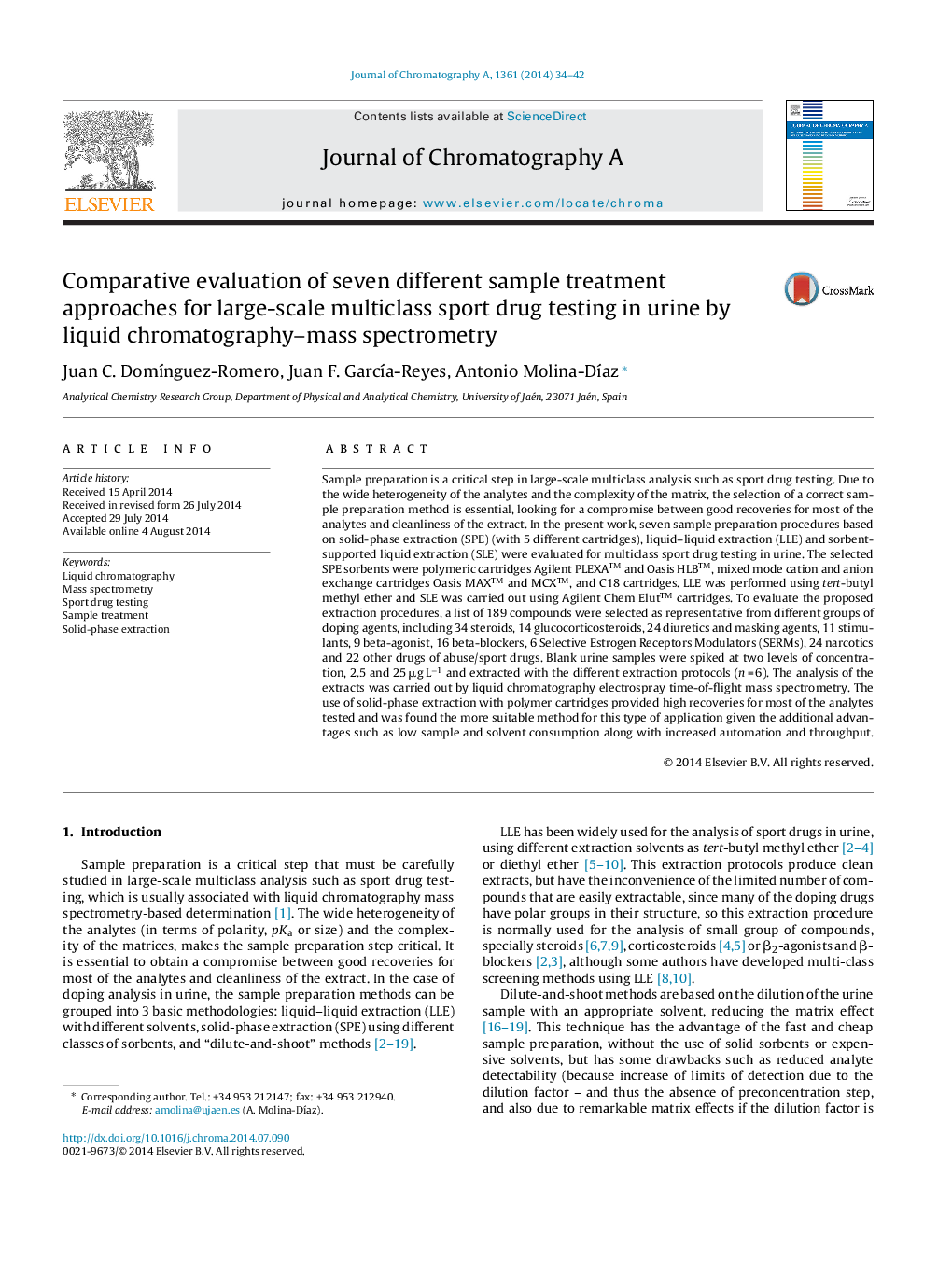| Article ID | Journal | Published Year | Pages | File Type |
|---|---|---|---|---|
| 1199283 | Journal of Chromatography A | 2014 | 9 Pages |
•Evaluation of seven different sample preparation methods for drug testing in urine.•Extraction approaches based on SPE, LLE and solid-supported liquid extraction.•189 multiclass sport drugs belonging to different categories tested using LC–TOFMS.•Best results were obtained with polymer type SPE protocols, covering most analytes.
Sample preparation is a critical step in large-scale multiclass analysis such as sport drug testing. Due to the wide heterogeneity of the analytes and the complexity of the matrix, the selection of a correct sample preparation method is essential, looking for a compromise between good recoveries for most of the analytes and cleanliness of the extract. In the present work, seven sample preparation procedures based on solid-phase extraction (SPE) (with 5 different cartridges), liquid–liquid extraction (LLE) and sorbent-supported liquid extraction (SLE) were evaluated for multiclass sport drug testing in urine. The selected SPE sorbents were polymeric cartridges Agilent PLEXA™ and Oasis HLB™, mixed mode cation and anion exchange cartridges Oasis MAX™ and MCX™, and C18 cartridges. LLE was performed using tert-butyl methyl ether and SLE was carried out using Agilent Chem Elut™ cartridges. To evaluate the proposed extraction procedures, a list of 189 compounds were selected as representative from different groups of doping agents, including 34 steroids, 14 glucocorticosteroids, 24 diuretics and masking agents, 11 stimulants, 9 beta-agonist, 16 beta-blockers, 6 Selective Estrogen Receptors Modulators (SERMs), 24 narcotics and 22 other drugs of abuse/sport drugs. Blank urine samples were spiked at two levels of concentration, 2.5 and 25 μg L−1 and extracted with the different extraction protocols (n = 6). The analysis of the extracts was carried out by liquid chromatography electrospray time-of-flight mass spectrometry. The use of solid-phase extraction with polymer cartridges provided high recoveries for most of the analytes tested and was found the more suitable method for this type of application given the additional advantages such as low sample and solvent consumption along with increased automation and throughput.
